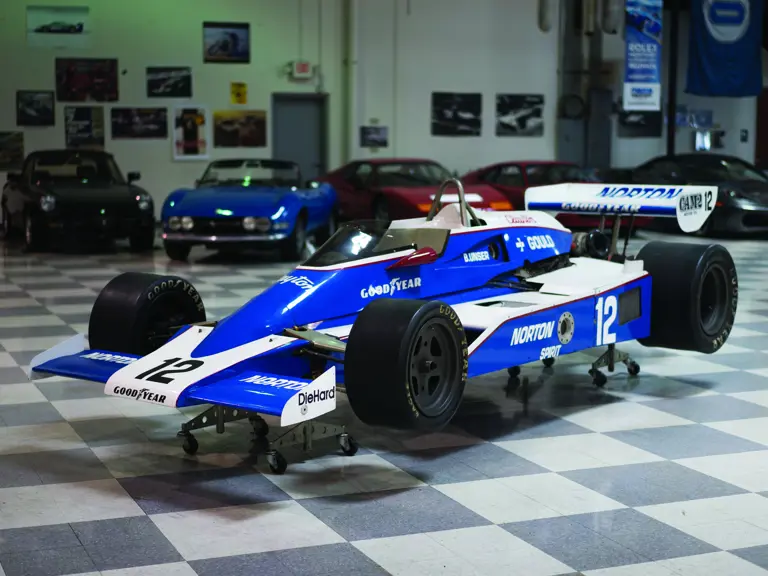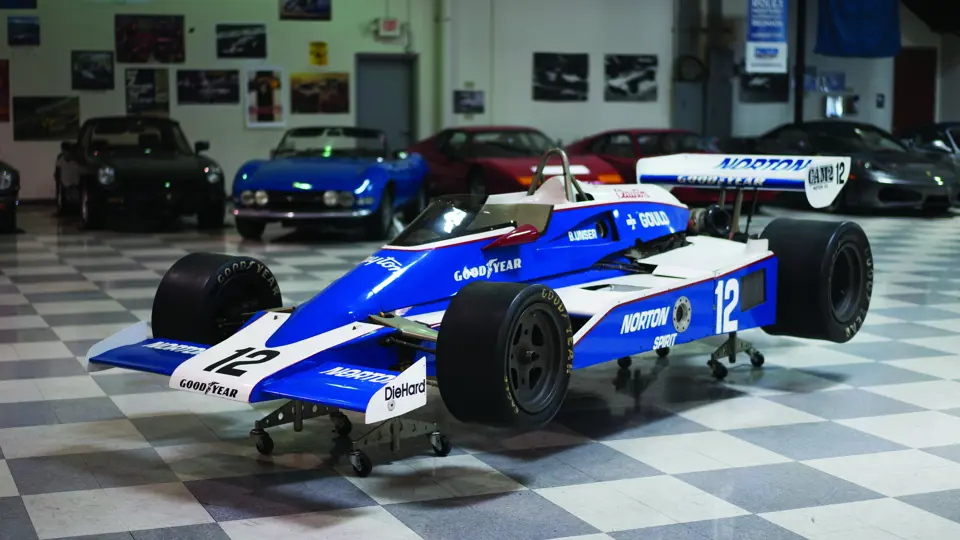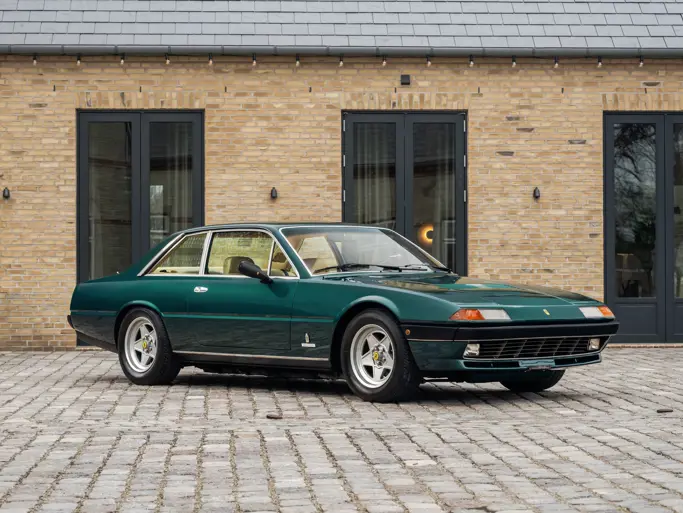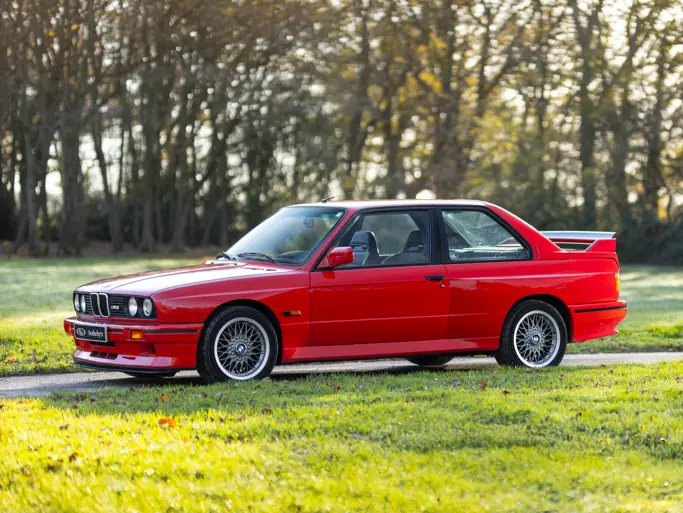Roger Penske is one of the most respected names in the world of motorsports and business, but it is in Indy Cars and the Indianapolis Motor Speedway that the Penske name is most likely recognized; mainly due to the unprecedented record of 16 victories by Team Penske at the Indianapolis 500. In regards to Team Penske’s record of racing excellence; 1998 Indy 500 winner, ex-F1, Indy and Le Mans driver, ex-car owner and current ABC Indy Car commentator, Eddie Cheever, has referred to Mr. Penske as “America’s Enzo Ferrari.”
Team was originally formed with Mr. Penske, mechanical virtuoso Karl Kainhofer and stellar driver, Mark Donohue. Mark was a mechanical engineering graduate from Brown University and was every bit as quick as he was smart. They were all like-minded in their idea of car preparation and presentation - a near-perfect blend of talents. They would unselfishly execute the completion of any task before them, and set the manner in which this team would go about the business of racing. For the first eight years of Team Penske, they and their dedicated group would prepare cars obtained from, or teaming with, manufacturers such as Chevrolet, Lola, Eagle, Ferrari, Porsche, McLaren and AMC in a meticulous fashion that set them apart - not only in detail, style and level of preparation, but in terms of speed, reliability and most importantly winning.
The first Penske Car (PC) to be built in Poole, England would be the Penske PC1 Formula One car which was completed near the end of the 1974 season and so began a history that would run through the PC28 Indy Cars of 1999. The Penske Cars are constructed in the same manner that every other facet of Mr. Penske’s business empire is run – to perfection. The highly respected Nick Goozee was Managing Director of Penske Cars.
Although Jim Hall’s Chaparral 2K, penned by John Barnard and driven in 1979 by Al Unser, usually is noted as being the first ground-effects Indy Car, the Penske PC7 was also on the grid that year from the first race of the season. The 2K was a “clean sheet” design while the PC7 was closely related to the PC6 with redesign that included the addition of side pods and proved to be a very effective racecar for the Penske team.
Penske Cars had built four chassis’ for Team for the 1979 season and such was the success, Penske would build seven or eight more PC7’s that would run with varying success in the following 1980 and 1981 seasons. You can even find privateer PC7’s being entered in the 1983 Indy 500, although without success. Penske Cars continued this line of selling customer cars with the ensuing PC9 and PC10 and then again in the ‘90s with select CART / Indy Car customers.
Bobby Unser would place the Team Penske PC7 on the pole for its first race at Phoenix on March 11, 1979 and would finish 5th. Rick Mears would come home 2nd in a second Team car after starting 5th. By the time Indianapolis came around on the calendar, Bobby Unser had decided to run the PC7 and Rick the PC6 for the 500. Rick would win the pole and the race, but the ground-effects cars showed their strength with the Al Unser Chaparral looking fabulous for the first 100 laps of the race, in front for 85 circuits, and Bobby Unser leading the most laps of the race with 89, but fell off the pace while leading with 18 laps to go when his PC7 lost high gear and Bobby nursed it home in 5th.
The PC7 chassis would be run by Team Penske for the remainder of the season with Bobby Unser scoring 7 poles and 6 wins, but would lose a close championship battle with teammate Mears, who would score two additional victories and poles for the PC7. Mario Andretti joined the team for the California 500 and Team Penske swept the top three positions with the PC7 / Cosworth combination. The total of 9 victories and 8 pole positions from a 14 race season is a testament to both the PC7 as a car and the Penske team and set the stage for the additional PC7 customer cars for the 1980 season while Team Penske developed the PC9 for the start of the 1980 season.
The Penske PC7 being offered is painted in the Norton Spirit livery with #12 that was found on the 1979 Bobby Unser Team car and was the singular most successful of all the PC7’s; the Penske Cars chassis tag on the top of the dash bulkhead shows that this is chassis #11, which indicates one of the last of the PC7’s built and that of a customer car. CART registration number 016 is below the shift lever on the driver’s right of the aluminum monocoque, while the left side of the tub carries USAC numbers 0379 and 1626. The proper research of these numbers should disclose a portion of this car’s actual on track history. The Cosworth block that acts as a stressed member is described as a non-running “dummy,” but the car does have a turbo, Hewland gearbox, certain Aeroquip-type plumbing is in evidence, shift linkage, half-shafts, dash instruments, plenum, oil tank and correct Penske wheels with Goodyear Eagle racing tires and makes a good looking “roller.”
Much like the respect that is shown for Dan Gurney and acquiring his Eagle creations; there will be no more Penske Cars built at the Poole facility and the number of Penske’s available and the opportunities to acquire them will only be less frequent. As Roger Penske and his wildly successful racing team celebrates their 50th Anniversary in the sport of motor racing, this car represents the exciting era of ground-effects development that would change the future direction of aero development throughout the sport.
As Karl Kainhofer recently related to respected racing author Gordon Kirby; “Penske Racing has come a long way from the tiny, two-man shop in Newtown Square where it all started 50 years ago to today's giant 300,000 square foot Team Penske operation in Mooresville, NC employing more than 400 people.” If you choose to add an Indy Car to your collection; a car associated with the Penske name is a solid choice.



 | Santa Monica, California
| Santa Monica, California


